Chamaesyce florida, Chiricahua Mountain Sandmat
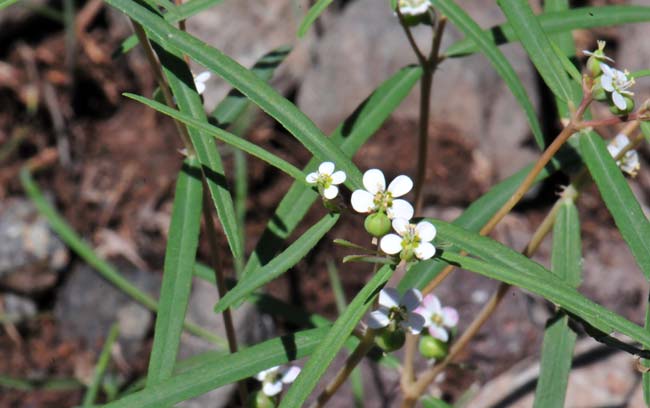
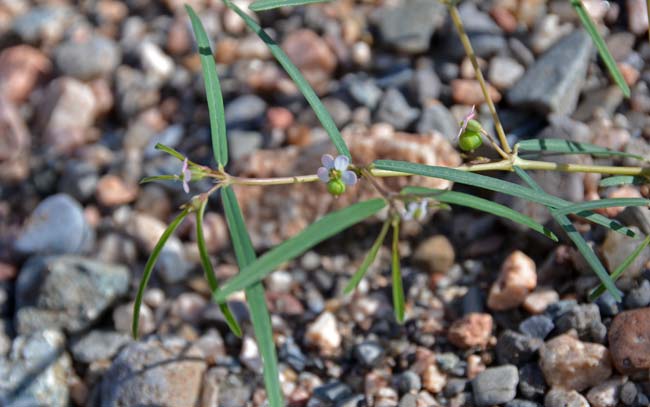
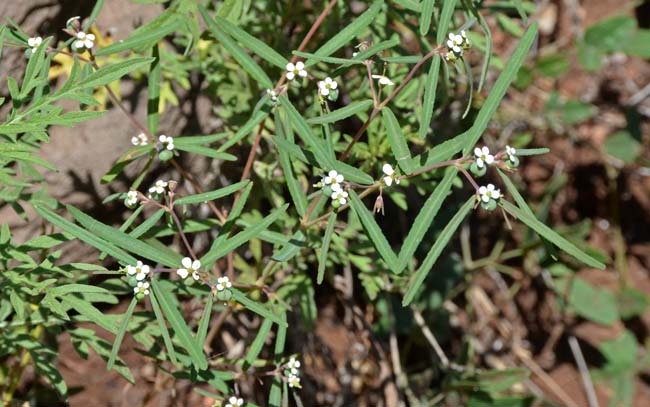
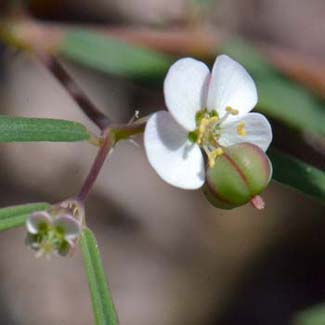
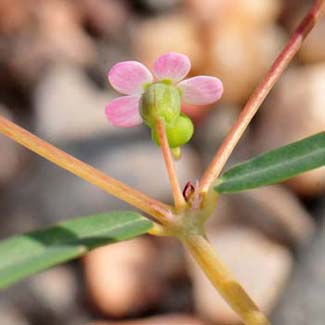
Scientific Name: Chamaesyce florida
Common Name: Chiricahua Mountain Sandmat
Also Called: Spurge
Family: Euphorbiaceae, Spurge or Euphorbia Family
Synonyms: (Euphorbia florida)
Status: Native
Duration: Annual
Size: Up to 7 inches or more.
Growth Form: Forb/herb; erect, multiple branching.
Leaves: Green; opposite, dentate, asymmetrical at the base, leaves linear or narrowly linear, about 2 inches long with prominent midvein.
Flower Color: White petaloid appendages, becoming pink with age; showy, mostly glabrous, inflorescence resembles a "flower", flowers solitary, actual flowers small or inconspicuous, monecious, botanically the "flower" is a cyathium, fruit a glabrous capsule.
Flowering Season: August to October.
Elevation: 2,000 to 5,000 feet.
Habitat Preferences: Rocky slopes and sandy or gravelly washes.
Recorded Range: Chiricahua Mountain Sandmat is very rare in the United States as it only occurs in Arizona in the central and southern portions. It is also native to northern and central Mexico.
North America & US County Distribution Map for Chamaesyce florida.
U.S. Weed Information: No information available.
Invasive/Noxious Weed Information: No information available.
Wetland Indicator: No information available.
Threatened/Endangered Information: No information available.
Comments: Chiricahua Mountain Sandmat is one of the easiest sandmats to identify with its upright growth form, slender branches and narrowly linear leaves. In the United States, it is found only in Arizona.
In Southwest Desert Flora also see: Whitemargin Sandmat, Chamaesyce albomarginata; Arizona Sandmat, Chamaesyce arizonica; Head Sandmat, Chamaesyce capitellata; Royal Sandmat, Chamaesyce dioica; Hyssopleaf Sandmat, Chamaesyce hyssopifolia; Red-gland Sandmat, Chamaesyce melanadenia; Carrizo Mountain Sandmat, Chamaesyce pediculifera; Threadstem Sandmat, Chamaesyce revoluta and Yuma Sandmat, Chamaesyce setiloba.
The type specimen was collected west of the Chiricahua Mountains, Cochise County, Arizona by Charles Wright in 1832. Charles Wright (1811-1885) was a prolific American botanist with extensive collections in the American Southwest particularly Texas.

